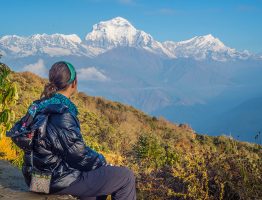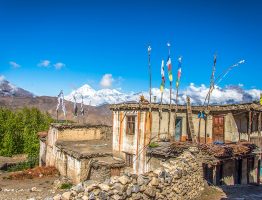Gurung People

Gurung is one of the 59 indigenous nationalities in Nepal residing on the foothills of Annapurna, Machhapuchre mountain range. The name Gurung is derived from the Tibetan word ‘Grong’ which means farmers. Gurung call themselves ‘Tamu’ which means horseman in the Tibetan language. They are densely populated in Kaski, Lamjung, Mustang, Manang, Gorkha, Parbat and Shyanja district. According to 2011 Census, the total population of Gurung is 5, 22,641. They are animists or followers of the Bon-religion, which is Shamanistic and animistic in nature. Their oral text is called Pye (Uthon) and their traditional religious scripture is known as Pye-ta Lhu-ta which contains oral accounts of their traditional history. The Gurung people, also called Tamu, are an ethnic group from different parts of Nepal. They believe that till the 15th century they were ruled by a Gurung king. When the British Empire came to South Asia, the Gurung people began serving the British in Army regiments of Gurkhas. Some of them also reside in Baglung, Okhaldhunga and Taplejung districts and Machhapuchhre region with some of them having migrated to West Bengal and Sikkim in India and Bhutan as well.
The Gurungs are very colorful, happy and flirtatious people. A caste hierarchy divides the Gurung community into ‘ char jat’ and ‘ sor jat’, group of four and twelve clans respectively. They are distinctly endogamous groups , however, are strictly exogamous clans. Traditionally they prefer cross- cousins marriage. Among some Gurungs, a small amount of compensation may be necessary if one wishes to avoid cross- cousins marriage. The parallel cousins marriage is , however, strictly prohibited. They also have a tradition of ‘ Rodi’ , a club of boys and girls of similar age group where dancing and singing is performed. This institution gives them ample opportunities to know, understand each other and develop love and affection. The environment in the Rodi is very flirtatious. The whole function is guided and held in the supervision of an adult. The Gurungs have very interesting dance tradition. They perform Sorathi, Ghado, Ghatu and others on one or many occasions. The dancing season generally starts on Shri Panchami day.
Gurungs are known for their hospitality. Rodi Ghar (dubbed “Night Pubs” by some foreigners) is a special and beautiful culture of the Gurungs. The songs sung in Rodi represent their culture. Ghatu is probably the most famous dance of the Gurungs. Another famous dance is Sorathi. They celebrate their Lhosar on Paush 15 every year. They mostly follow Hindu and Buddhist religions. There are also shamanic practices (Dhami, Jhakri).
Traditional dress of the Gurungs includes a short blouse tied across the front and a short skirt of several yards of white cotton material wrapped around the waist and held as if a wide belt. The Gurung women wear a cotton or velveteen blouse tied at the front, and a sari of printed material usually a dark reddish color. Their ornaments include gold and coral necklaces, gold earrings and nose rings and bangles.


